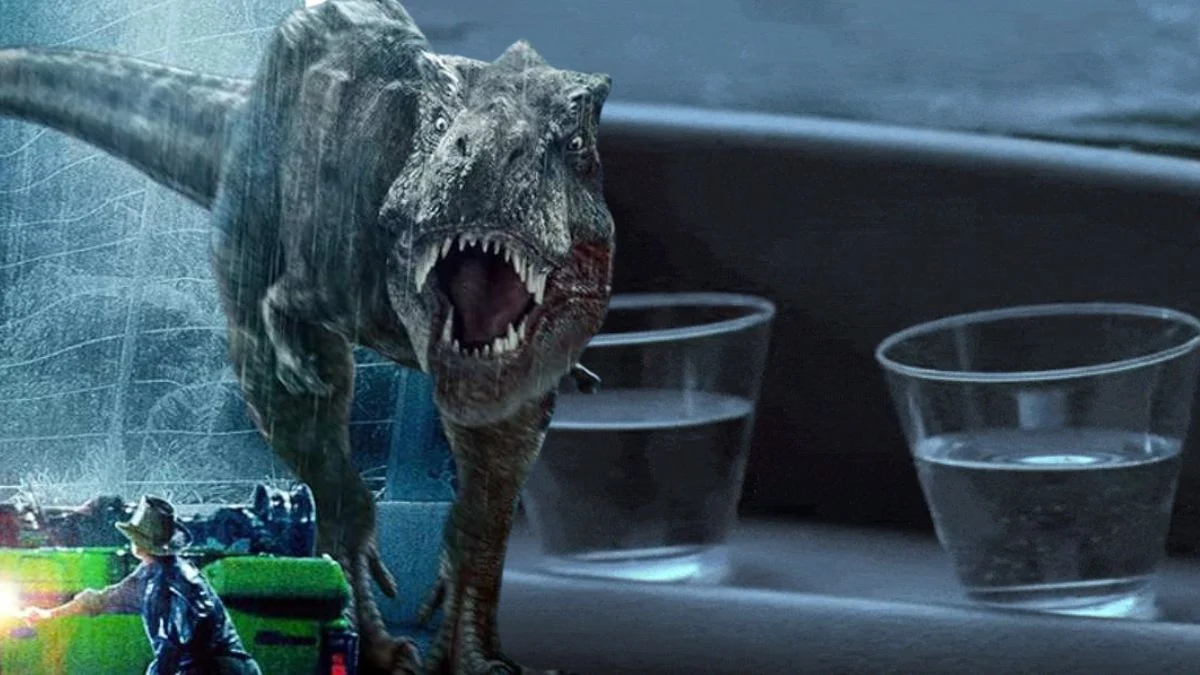
The ‘Jurassic Park‘ movies are full of carefully planned details, just like the dinosaurs themselves. The filmmakers used clever practical effects and made thoughtful choices that impacted entire scenes. Many of these subtle touches aren’t noticeable on a first viewing, but they show how much effort went into creating believable, cloned dinosaurs.
Behind the scenes, clever sound techniques, adjustments during filming, and changes from the original books all subtly shaped what you see on screen. The series also uniquely combined real-world props and effects with advanced technology, all while drawing inspiration from the science of paleontology and computers as it existed at the time. Here are ten fascinating details that add depth to the story.
The T. rex roar is a mix of several real animals
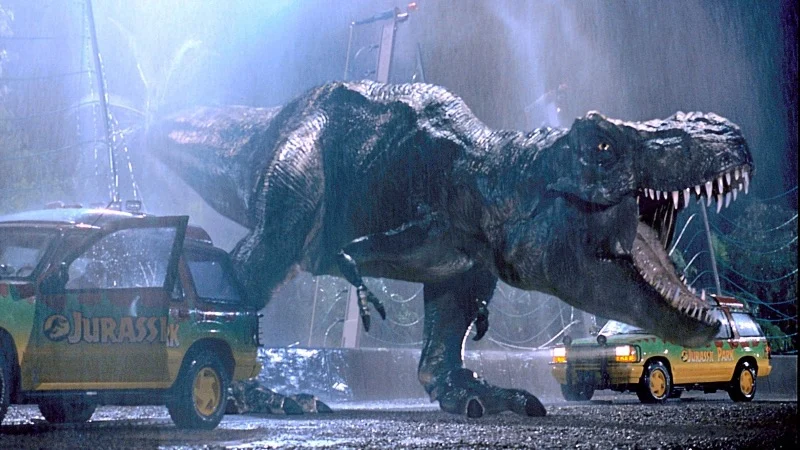
The iconic roar of the Tyrannosaurus Rex wasn’t created with one recording. Instead, sound designers combined sounds like baby elephant cries, lion and tiger growls, and alligator snarls to make a roar that sounded massive and natural. This layering technique allowed them to build a sound with depth, richness, and a powerful resonance that wouldn’t get lost in background noise like rain or engines.
The vocal layers were carefully adjusted to sound different depending on how close or far away the dinosaur appeared on screen. For close-up scenes, the sound was made fuller and more immediate, while distant shots focused on a longer, echoing sound to make it travel across the landscape. This created a consistent dinosaur voice that still felt natural within each scene and environment.
The famous water ripples came from a guitar trick
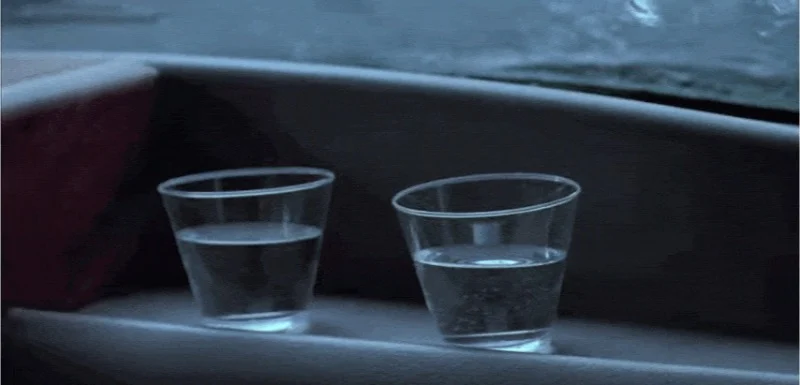
The ripples seen in the cup weren’t created with special effects. Instead, the team stretched a tight guitar string under the car and plucked it. This sent vibrations through the surface where the cup rested, creating a consistent wave pattern that resembled the impact of a giant footstep.
To make the camera, cup, and car react at the same time, the team carefully adjusted the string until the resulting wave matched the pace of the footsteps. They filmed several takes with varying levels of intensity, giving the editors options to build suspense right before the T. rex appears.
The first film uses surprisingly little CGI
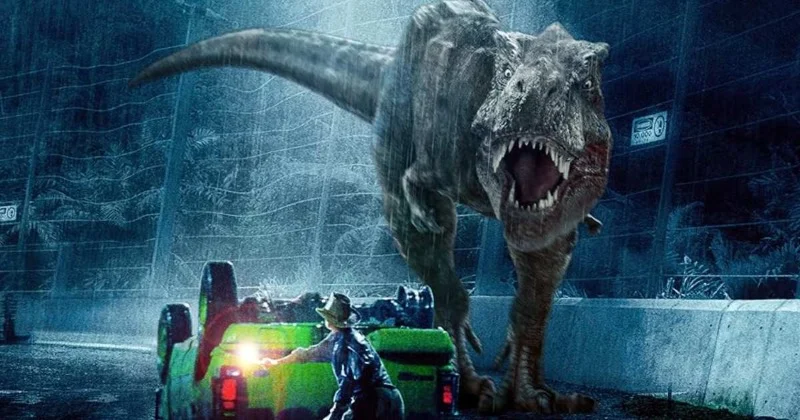
As a huge ‘Jurassic Park’ fan, I always thought the dinosaurs looked so real! What’s amazing is that most of them *weren’t* CGI. Stan Winston’s team actually built full-size or partial animatronic dinosaurs for most of the movie. The digital effects from ILM were really only used for things that were impossible to do practically, like really long shots of the dinosaurs running or jumping – stuff you just couldn’t achieve with a physical model.
This technique allowed filmmakers to seamlessly blend physical creature effects with computer-generated imagery. Using practical effects provided realistic visuals for actors to react to, like proper eye lines and natural shadows, while CGI expanded the scope of the dinosaurs’ movements and size. This combination defined the franchise’s visual style and ensured subsequent films maintained a sense of realism, thanks to the interplay of light with tangible dinosaur models on set.
The raptors were modeled more on Deinonychus than Velociraptor
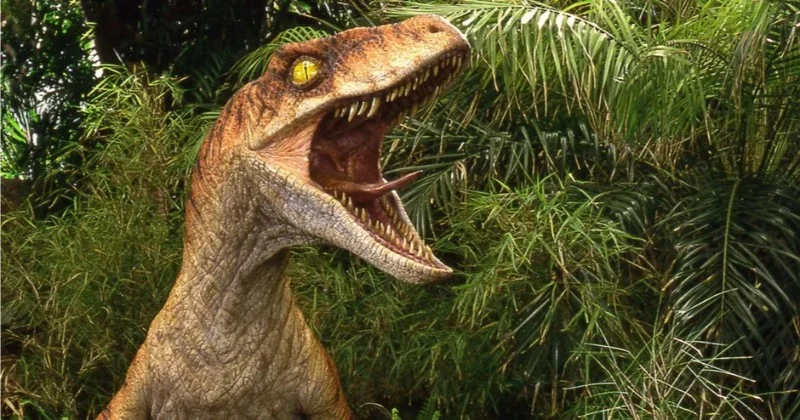
The Velociraptors shown in the movies actually resemble Deinonychus more closely in size and shape – Deinonychus was a bigger, similar dinosaur with the same distinctive sickle-shaped claw. The filmmakers chose this build because it looked more intimidating on screen and was easier to work with for stunts, animatronics, and showing the dinosaurs acting as a coordinated group, like opening doors.
News about fossils, including larger raptors like Utahraptor, showed that the idea of big, powerfully built raptors was realistic. While the films used the Velociraptor name from the original book, the creatures’ design blended scientific accuracy with what looked best on screen.
Book to screen changes swapped the siblings’ skill sets
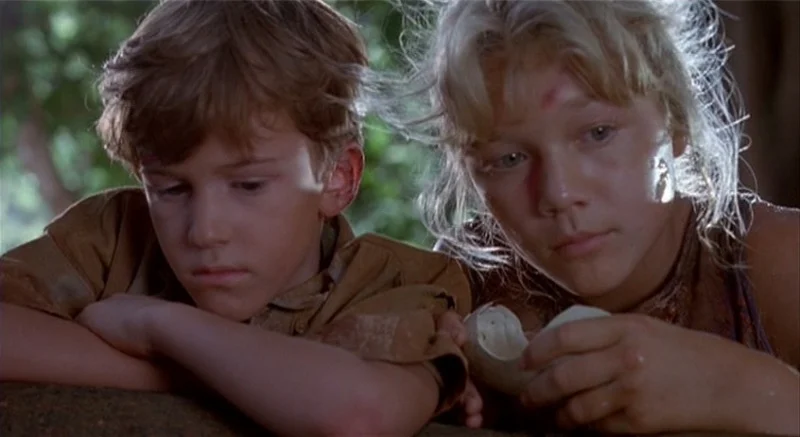
In Michael Crichton’s book, Tim is the tech expert and Lex is the athletic younger brother. The movie switched their roles, making Lex the one who understands the park’s computer systems. This change made the scene in the control room flow more smoothly and gave the story a direct way to regain control and fix the security issues.
The change in roles also made sure the kids had equal parts to play during action sequences, like the scenes in the kitchen and at the electric fence. Giving Lex the responsibility for hacking created a smooth transition between the physical dangers and the technical work of getting things like doors and cameras working again, which helped the adults.
The on screen “It’s a UNIX system” interface was a real tool
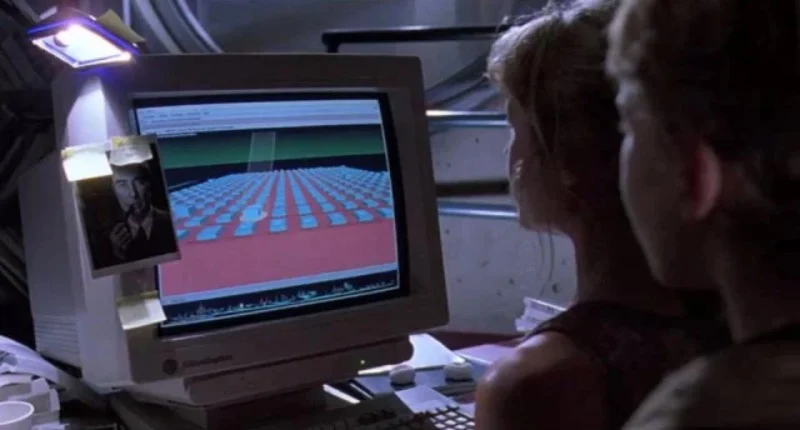
The 3D file navigator Lex used wasn’t a fake – it was a real program called fsn, originally designed for Silicon Graphics computers. The filmmakers installed it so the actors could virtually explore a digital version of the park’s computer network, as if it were a real place.
Having a functioning program ensured the on-screen elements – like the cursor, windows, and how quickly things happened – felt realistic. This allowed the camera to record genuine mouse movements and menu interactions. It also made the scene feel current, as the park’s visual effects were already built to work with the SGI computer systems being used.
The mosquito in amber belongs to a species that does not bite
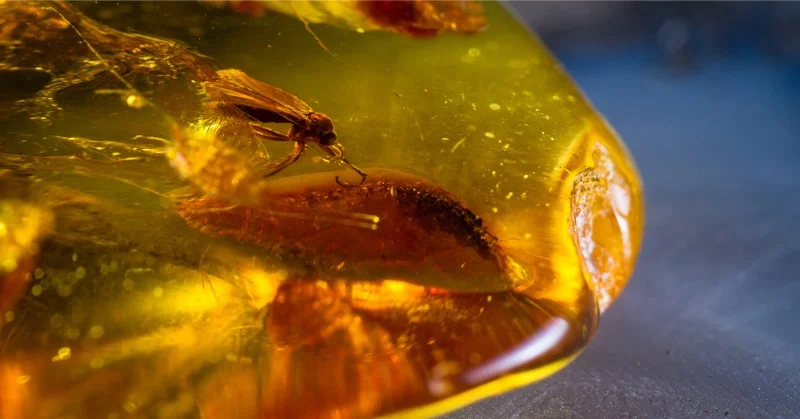
The mosquito preserved in amber in the movie ‘Jurassic Park’ was based on an elephant mosquito – a type that actually doesn’t drink blood. Filmmakers chose this particular mosquito because its unique appearance and large size looked great on camera through the amber and quickly conveyed the idea they wanted to show.
As a huge movie fan, I always found it fascinating that the mosquitoes used in the film don’t actually bite! It’s a funny little detail when you consider the whole cloning plot. But honestly, that prop mosquito *worked*. It made the idea of getting DNA from those insects really visual and stuck in your head, and it’s become such an iconic image for the series, even though we now know real mosquito biology isn’t quite how it’s shown on screen.
The San Diego finale in ‘The Lost World: Jurassic Park’ was created for the film
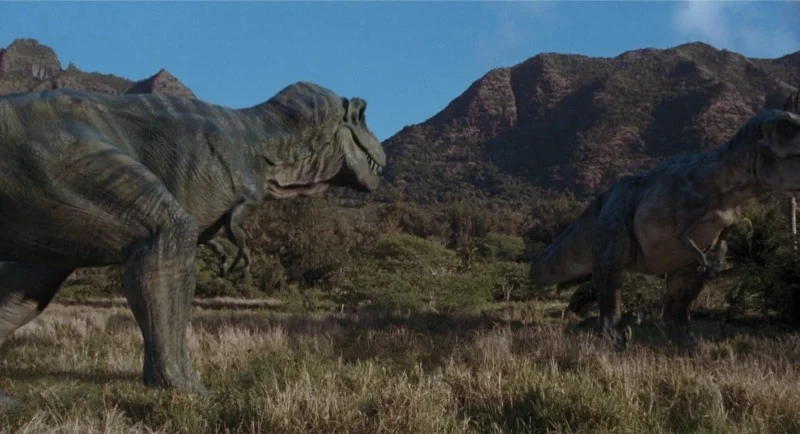
The thrilling city scene with the T. rex in the second movie wasn’t part of the original book. Filmmakers created it to show what a dinosaur loose in a modern city would be like and to take the story beyond the island setting we’d already seen.
Creating that extended scene meant building new models, constructing sets on the studio lot, and finding suitable outdoor locations. It also involved creating special effects, like realistically damaged buildings and ships. The scene was particularly challenging because it required a combination of practical effects, using a mechanical T. rex that could move around props, and computer-generated imagery for wider shots of the dinosaur moving through the environment.
Rain caused the T. rex animatronic to misbehave between takes
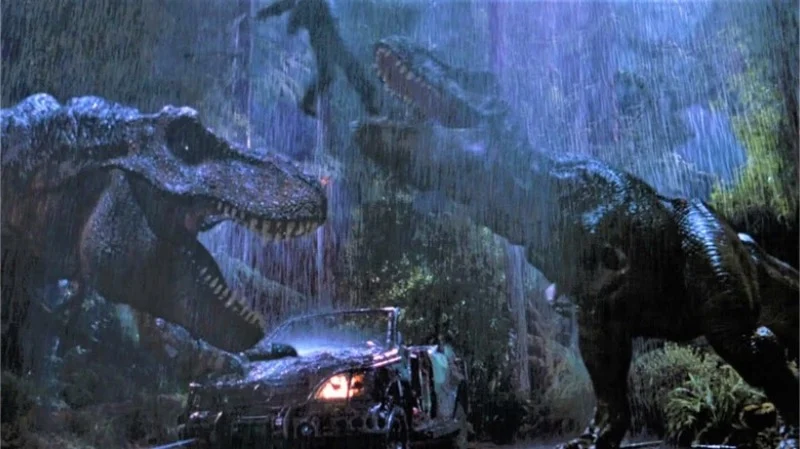
The realistic T. rex was made with a foam latex skin stretched over a system of hydraulics. Because the skin absorbed water when filming at night, it became heavier, causing the head and body to droop. The crew had to regularly dry and warm the dinosaur to ensure smooth, predictable movements and avoid sudden, jerky motions.
The regular maintenance schedule influenced how shots were planned and how quickly the set could be reset. Crew members fine-tuned valve timing and water pressure to account for wet areas, and the special effects team coordinated the rain machines and camera angles so the dinosaur’s subtle actions occurred when the mechanical parts were least likely to malfunction.
Stop motion was the original plan before CGI took over
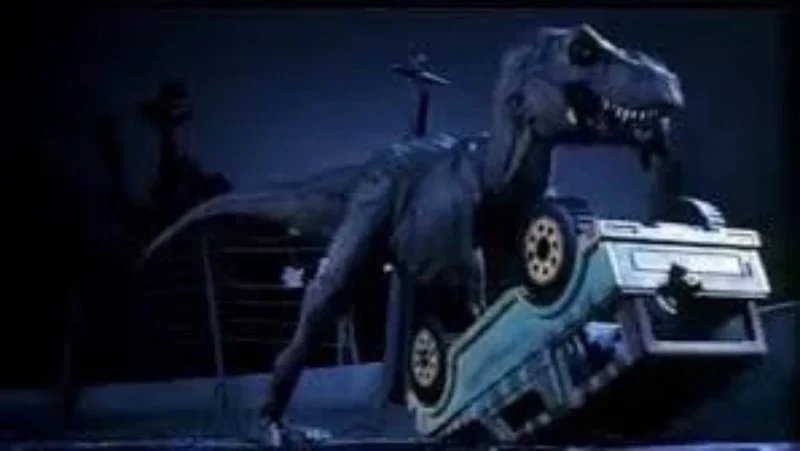
Initially, the plan was to create the dinosaurs using a sophisticated form of stop-motion animation called go motion. However, tests conducted by ILM demonstrated that fully computer-generated dinosaurs could move more smoothly and integrate more seamlessly with live-action footage. As a result, the team decided to use CGI for certain parts of the film.
As a huge movie fan, I always appreciate when filmmakers get the details right. In this case, the team brought on the lead from the stop-motion side to really help the digital animators. They provided things like detailed studies of how animals move, notes on their behavior, and even reference footage. This allowed the digital artists to make the animal movements look incredibly realistic. It was such a successful approach that it became the standard for the whole franchise – blending practical effects with digital work in a way that just *worked*.
Tell us your favorite obscure or hidden detail from any franchise in the comments, and explain which moment you wish more fans would pay attention to.
Read More
- Silver Rate Forecast
- Gold Rate Forecast
- Красный Октябрь акции прогноз. Цена KROT
- MSCI’s Digital Asset Dilemma: A Tech Wrench in the Works!
- Dogecoin’s Big Yawn: Musk’s X Money Launch Leaves Market Unimpressed 🐕💸
- Bitcoin’s Ballet: Will the Bull Pirouette or Stumble? 💃🐂
- Guardian Wealth Doubles Down on LKQ Stock With $1.8 Million Purchase
- Binance and Botim Money Join Forces: Crypto in the UAE Gets a Boost-Or Does It? 🚀
- Twenty One Capital’s NYSE debut sees 20% fall – What scared investors?
- Monster Hunter Stories 3: Twisted Reflection gets a new Habitat Restoration Trailer
2025-10-14 10:59